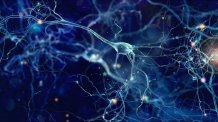
Motor neurone disease affects around one in 2,500 people in the UK
Motor neurone disease linked to cholesterol imbalance in cells
Scientists have developed a new theory on the underlying cause of motor neurone disease, which could lead to more accurate diagnosis for patients and new treatments.
A team at the University of Exeter has found evidence that the condition is caused by an imbalance in cholesterol and other fat levels in the compartments of the body’s cells, triggered by a number of different gene mutations.
There are many different forms of motor neurone disease, which together affect around one in 2,500 people in the UK. Due to their complex nature, motor neurone conditions may be difficult to diagnose, and currently no treatments are available to stop progression. The degenerative condition can vary hugely in terms of specific symptoms, age of onset and rate of progression, even between members of the same family. If confirmed, the new theory could lead to scientists to use blood samples to predict the course and severity of motor neurone disease in an individual, and to monitor the effect of potential new drugs to treat these disorders.
The finding particularly relates to the large group of motor neurone conditions called the ‘spastic paraplegias’, due to malfunction in how motor neurons in the upper part of the spinal cord communicate with muscle fibres. This leads to symptoms including muscle stiffness, weakness and wasting.
Professor Andrew Crosby, of the University of Exeter Medical School, is lead author of the paper outlining the theory, published today in Brain: a Journal of Neurology. He said: “For years, we have known that a large number of genes are involved in motor neurone disease, but so far it hasn’t been clear if there’s a common underlying pathway that connects them. Our group’s previous research has identified 13 genes which if altered may cause the condition, and some of these discoveries have proven crucial as the genes we identified are directly involved in the cholesterol processing pathway. That led to a Eureka moment, that cholesterol and other fat processing pathways in cells, are in fact the common link.”
Dr Emma Baple, of the University of Exeter Medical School, said: “Currently, there are no treatments available that can reverse or prevent progression of this group of disorders. Patients who are at high risk of motor neurone disease really want to know how their disease may progress and the age at which symptoms may develop, but that’s very difficult to predict. This paper should guide further research in this area, and we’re confident it could lead to more effective diagnostic tools and treatment strategies for a group of diseases that have a huge impact on people’s lives.”
The research is supported by the Medical Research Council, the Newlife Foundation for Disabled Children, The Hereditary Spastic Paraplegia Support Group (UK), the Halpin Trust, and the Wellcome Trust. The paper is entitled ‘Lipid metabolic pathways converge in motor neuron degenerative diseases’.
Date: 18 December 2019
